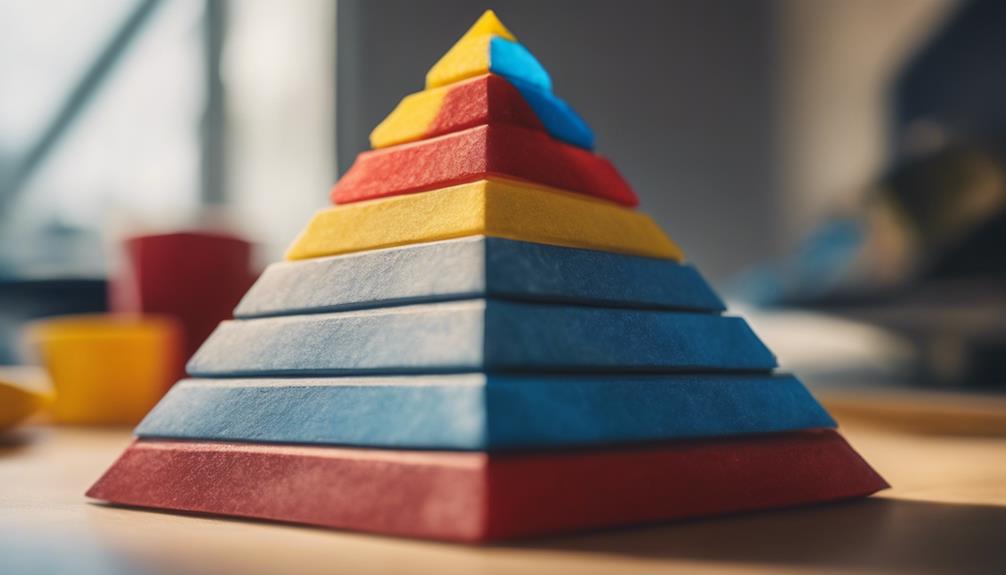In our efforts to accomplish more, we often find ourselves achieving less. Many individuals juggle numerous tasks, feeling overwhelmed and stretched too thin. To genuinely save time in a hectic life, it is essential to implement strategies that not only simplify your responsibilities but also enhance your concentration.
Effective task prioritization is vital, as it helps you focus on what truly matters. Embracing technology can also play a significant role; for instance, using automated tools for tasks like scheduling or grocery shopping can free up valuable time.
Unexpected habits can also unlock your productivity. For example, incorporating short breaks into your routine can actually boost your focus and efficiency. Studies show that taking regular pauses helps recharge your mind, leading to improved performance when you return to work.
Additionally, creating a dedicated workspace, free from distractions, can significantly enhance your ability to concentrate on your tasks.
Consider using productivity apps like Trello or Asana to keep track of your projects and deadlines. These tools allow you to visualize your workload and prioritize tasks effectively.
Similarly, meal planning apps like Plan to Eat can help streamline your grocery shopping and cooking, saving you hours each week.
Investing in these strategies and tools can transform your busy life, allowing you to reclaim your time and improve your overall productivity.
Prioritize Your Tasks
When managing several responsibilities, recognizing and ranking your tasks can significantly enhance your productivity. Start by categorizing your to-do list based on how important and urgent each task is. This method allows you to pinpoint what requires your immediate focus and what can be postponed.
Next, ensure your tasks align with your personal goals and values. This alignment is crucial, as it ensures that you aren’t merely busy but are actively progressing towards the freedom you desire.
While assessing your tasks, consider if there are any that can be assigned to others. Delegating tasks not only reduces your workload but also empowers those around you, fostering teamwork.
Once your priorities are established, concentrate on optimizing your tasks. Look for opportunities to streamline your processes or combine similar tasks to enhance efficiency.
Implementing a task-tracking system will help you monitor your progress and adjust your priorities as necessary. This approach keeps you organized and focused on what truly matters in your daily activities.
Set Clear Goals
Establishing clear goals is essential for effective time management. When you have a clear understanding of your objectives, you can direct your efforts towards the tasks that genuinely matter, which instills a sense of freedom and purpose in your daily activities.
Here are four actionable steps to assist you in formulating clear goals:
- Clarify Your Vision: Think about how you want your life to unfold. Utilize visualization techniques to generate a detailed mental picture of your desired outcomes, helping you stay motivated and aligned with your aspirations.
- Formulate Specific Goals: Craft goals that are precise and quantifiable. For instance, instead of stating, “I want to improve my health,” aim for a clear objective like, “I will engage in 30 minutes of exercise, five days a week.” This specificity not only makes your goals more attainable but also allows for easier tracking of your progress.
- Create a Timeline: Assign deadlines to your goals. Having a set timeframe fosters a sense of urgency and ensures accountability, compelling you to take proactive steps toward achieving your aims. Consider using tools such as calendars or goal-tracking apps to keep yourself organized.
- Communicate Your Goals: Discuss your goals with someone you trust. This practice of sharing encourages accountability, motivating you to stay committed to your objectives and ensuring you remain on the path toward realizing your vision.
Use a Calendar
Using a calendar can significantly enhance your life organization and task prioritization. When you embrace calendar management, you’re not merely tracking events; you’re establishing a framework that fosters your independence. Setting up event reminders ensures you never overlook a crucial meeting or deadline, allowing you to concentrate on what genuinely matters.
Flexibility in your schedule is essential. Implementing time blocking enables you to designate specific time slots for tasks, preventing feelings of being overwhelmed. Allocating time for tracking your goals keeps you motivated and aligned with your objectives. Planning your day becomes straightforward as you can visualize your week and make adjustments as necessary.
Effective appointment management is also important. Synchronizing your calendar across multiple devices ensures that all your information is easily accessible, empowering you to adjust your plans on the fly. This capability allows you to take advantage of unexpected opportunities that may arise while still keeping your commitments in check.
Consider utilizing digital calendar applications like Google Calendar or Microsoft Outlook, which offer features such as shared calendars and color-coding to enhance your organization. These tools can help streamline your planning process and improve your overall productivity.
Block Distractions
To effectively manage your time, it’s essential to eliminate distractions that hinder your concentration.
Start by recognizing the elements that divert your focus, such as social media notifications or noisy environments. Establish specific time frames for tasks to maintain a structured approach to your work.
Consider utilizing productivity tools like website blockers or focus apps that can assist in keeping you aligned with your goals and enhance your efficiency. For instance, tools like Forest or Freedom can help you stay committed to your work by limiting access to distracting sites.
Prioritizing your focus not only maximizes your productivity but also fosters a more satisfying work experience.
Identify Major Distractions
Distractions can infiltrate your daily routine and disrupt your plans more quickly than you might expect. To take back your time and ensure you uphold a healthy work-life balance, it’s essential to pinpoint the major distractions that hinder your progress.
Here are four significant offenders:
- Social Media: Engaging with social media platforms can drain hours from your day without your awareness. Setting specific time limits for use can help you maintain control over your schedule.
- Digital Notifications: The barrage of alerts from various applications can disrupt your concentration. To combat this, consider silencing non-essential notifications during focused work periods, allowing you to maintain a more productive workflow.
- Physical Clutter: A disorganized environment can lead to mental disarray, making it difficult to focus and affecting your overall well-being. Investing time in decluttering your workspace can significantly enhance your ability to concentrate.
- Environmental Distractions: Factors such as noise, interruptions from colleagues or family members, or an uncomfortable workspace can impede your productivity. Creating a designated quiet area or using noise-canceling headphones can help minimize these interruptions.
Identifying and addressing these distractions is crucial for enhancing your productivity and maintaining your mental health.
Set Time Limits
Establishing boundaries is crucial for maintaining focus in a world filled with distractions. To take back control of your time, consider applying timeboxing techniques. This method allows you to designate specific time slots for tasks, creating a sense of urgency that enhances productivity.
Here’s a straightforward way to illustrate your time limits:
| Task | Time Block | Urgency Assessment |
|---|---|---|
| Email Responses | 30 minutes | High |
| Project Work | 2 hours | Medium |
| Break | 15 minutes | Low |
| Planning Next Steps | 1 hour | Medium |
Establishing these time limits fosters a structured approach that reduces distractions. When you are aware of the designated time for each task, it motivates you to concentrate and complete your work efficiently. Evaluate the urgency of each task; this practice will assist you in prioritizing and managing your time effectively.
Use Focus Tools
Blocking out distractions is crucial for maintaining productivity in a hectic life. To regain your time and enhance mental clarity, consider utilizing focus tools that align your tasks and objectives. Here are some effective strategies that can help you remain engaged and in control:
- Productivity Apps: Utilize applications such as Todoist or Trello for managing tasks. These tools keep your assignments organized and foster a better understanding of your time management.
- Cognitive Tools: Adopt the Pomodoro Technique, which involves breaking your work into intervals followed by short breaks. This method enhances concentration and allows for moments of rest that can refresh your mind.
- Attention Management: Establish limits with notifications. Silence your phone and close unnecessary browser tabs to minimize interruptions, thereby enhancing your ability to focus.
- Goal Visualization: Write down your goals and review them regularly. This practice helps you connect your daily tasks with your long-term objectives, thereby boosting motivation and engagement.
Implementing these strategies can significantly improve your focus and productivity, helping you navigate through a busy lifestyle with greater ease.
Delegate Responsibilities
To save time, start by pinpointing tasks that can be handed off to others.
Selecting the right individuals for these duties is crucial, as it enables you to concentrate on what genuinely matters.
Sharing responsibilities allows you to better manage your workload, freeing up both time and energy for your top priorities.
For example, if you’re overwhelmed with administrative tasks, consider delegating them to an assistant or team member who can handle those responsibilities efficiently.
This way, you can dedicate more attention to strategic planning or creative projects that require your unique skills and insights.
Identify Tasks to Delegate
In a landscape filled with numerous responsibilities, recognizing which tasks to delegate can significantly enhance your productivity. Letting go of certain duties allows you to concentrate on what truly matters in your professional and personal life. Begin with a detailed assessment of your tasks to determine what can be delegated effectively.
Follow these four steps to streamline the process:
- Skill Mapping: Assess the individual strengths within your team. Identify who possesses expertise in specific areas, as this will inform your delegation decisions.
- Workload Balance: Determine which tasks are overwhelming you and align them with the strengths of your team members. This not only eases your burden but also empowers your colleagues to shine in their roles.
- Clear Expectations: Clearly communicate what you need from your team. Specify the outcomes you expect, the deadlines for completion, and any resources available to assist them.
- Feedback Loops: Create open communication channels. Encourage team members to ask questions and provide updates. This fosters an environment of trust and collaboration, ensuring that everyone is on the same page.
Building trust is crucial in the delegation process. When you assign tasks, you’re not merely transferring responsibilities; you’re empowering others to take ownership.
This cultivates a supportive atmosphere where everyone can flourish. As you delegate, keep communication lines open to adjust tasks as required. Effective delegation is about teamwork and collaboration, not just passing off work.
Embrace this strategy to reclaim your time and achieve a healthier work-life balance.
Choose the Right People
Selecting the right individuals for delegation is crucial for enhancing efficiency and achieving desired results. When you collaborate with capable team members who align with your vision, you gain the opportunity to concentrate on what’s most important.
Begin by assessing your network; pinpoint those who’ve the necessary skills and attributes that correspond with your responsibilities. Implementing effective networking strategies can assist you in developing a robust team that complements your strengths.
Managing relationships effectively is essential in this process. Clearly communicate your expectations and outline the specific responsibilities you wish to delegate. Ensure that those you select aren’t only proficient but also dependable and trustworthy.
Delegating tasks to the appropriate individuals allows them to take ownership of their work, fostering increased motivation and productivity.
For instance, consider a project where you need to create a marketing strategy. By identifying a team member with a strong background in digital marketing, you can delegate that aspect of the project, allowing you to focus on broader strategic decisions.
Utilizing tools like project management software can further enhance collaboration and track progress effectively.
Automate Repetitive Tasks
Repetitive tasks can consume your time and energy, but automating them can open up your schedule for more meaningful activities.
Utilizing automation tools and time-saving apps allows you to streamline your workflow and regain control of your day. Here are four effective strategies to consider:
- Task Scheduling: Utilize digital assistants to automatically organize your appointments and reminders. This eliminates the need for manual calendar management and helps keep your time organized.
- Smart Home Automation: Incorporate smart devices to handle daily chores effortlessly. For example, smart lighting can adjust automatically based on the time of day, while a smart thermostat can optimize your home’s temperature without any manual input.
- Process Streamlining: Use software integration to manage tasks more efficiently. For instance, connecting your email, calendar, and project management tools can significantly reduce the time spent on repetitive administrative tasks, allowing you to focus on what’s important.
- Efficiency Techniques: Explore automation tools like Zapier or IFTTT, which enable you to establish workflows that trigger actions across various apps. For example, you could set up a workflow that automatically saves email attachments to cloud storage, saving you from the tedious task of doing it manually.
Implementing these strategies can significantly enhance your productivity and provide you with more free time to dedicate to important projects or personal interests.
Master the Art of Saying No
Mastering the ability to say no is crucial for reclaiming your time and energy. When you learn to decline requests, you aren’t merely rejecting them; you’re prioritizing your own needs and desires. Use clear and assertive communication to express your boundaries with confidence. This approach isn’t about being impolite; instead, it emphasizes the value of your time and the importance of making choices that align with your personal goals.
Begin by determining what’s truly important to you. Take a moment to reflect on your current commitments and evaluate how they contribute to your overall sense of freedom and fulfillment. When faced with a request that doesn’t align with your priorities, feel empowered to say no. A respectful way to decline could be to say, “Thank you for considering me, but I’m unable to take that on at this time.” This method honors both your time and the individual making the request.
Establishing boundaries benefits not only you but also encourages others to respect their own limits. The more you practice saying no, the more confident and empowered you’ll become. Remember that declining certain requests opens up opportunities that resonate more closely with your values and aspirations. Ultimately, this practice allows you to create space for what truly matters in your busy life.
Consider specific situations, such as when a colleague asks for assistance on a project that doesn’t interest you, or a friend invites you to an event that conflicts with your personal time. In these instances, having a clear understanding of your priorities will enable you to respond in a way that maintains your commitments while also being respectful to others.
Batch Similar Activities
When you organize similar tasks, you simplify your workload and reduce the mental strain of shifting your attention. This concept is known as time batching. Employing strategies that focus on efficient scheduling can lead to a seamless workflow, enhancing your productivity and freeing up valuable time.
Here are four effective methods for categorizing activities:
- Emails and Communication: Allocate specific times each day to handle emails and messages instead of checking them sporadically throughout the day. This practice helps maintain focus on other tasks without constant interruptions.
- Errands: Combine all your errands into a single trip. This not only saves time but also minimizes the hassle of making multiple journeys, allowing for a more efficient use of your day.
- Creative Tasks: Set aside dedicated blocks of time for brainstorming or content creation. This approach enables you to immerse yourself in your creative process without disruptions, leading to better results.
- Meetings and Calls: Schedule all your calls and meetings within a defined time frame. This technique frees up the remainder of your day for concentrated work, ensuring that you can focus on important tasks without distraction.
Implementing these strategies can significantly enhance your productivity and create a more organized approach to managing your time.
Establish Routines
Establishing routines can significantly enhance your everyday life. Creating structured daily habits allows you to concentrate on what is truly important. Morning rituals can foster a positive mindset, while evening routines provide a sense of closure to your day. With effective strategies in place, you can discover productivity methods that resonate with you.
Here’s a straightforward table to help you visualize your routines:
| Time of Day | Routine |
|---|---|
| Morning | Wake up, stretch, meditate |
| Midday | Lunch break, quick walk |
| Evening | Family time, dinner prep |
| Night | Read, reflect, sleep |
Engaging your family in the process of establishing these routines can turn it into a shared experience. It is essential to adapt your routines as circumstances change, allowing you to remain flexible. Integrating self-care activities into your day helps rejuvenate your spirit and maintain equilibrium. The essence of success lies in consistency; the more you adhere to these rituals, the more liberated you will feel in your life.
For instance, consider incorporating a gratitude journal into your evening routine. This practice can help you reflect on the positives of your day and promote a sense of fulfillment. Another example could be setting aside time for a family game night during your evening routine, which fosters connection and creates lasting memories.
Limit Meeting Times
Reducing meeting durations can free up significant hours in your busy schedule. Focusing on the effectiveness of each meeting ensures that gatherings are meaningful and purposeful, allowing you to reclaim valuable time.
Here are four strategies to help you limit meeting lengths:
- Set a Time Limit: Decide how long each meeting will last and adhere to that timeframe. This practice encourages participants to remain focused and communicate concisely.
- Create Concise Agendas: Prepare clear and straightforward agendas that outline the main topics for discussion. Distributing these agendas beforehand enables attendees to come ready to engage.
- Implement Stand-Up Meetings: Consider organizing brief stand-up meetings to facilitate quick exchanges and maintain focus. This approach can significantly reduce the time spent in lengthy discussions.
- Assess the Need for Meetings: Before arranging a meeting, evaluate whether it’s essential. If the matter at hand can be addressed through an email or a brief conversation, choose those options instead.
Take Breaks Effectively
After optimizing your meeting times, it’s crucial to appreciate the significance of taking breaks effectively. These moments are essential for recharging and reconnecting with yourself.
Begin with mindful breathing; dedicate a few minutes to focus on your breath and release any stress. A nature walk outdoors can also be beneficial; the fresh air and greenery often elevate your mood and increase your energy levels.
Consider a digital detox during your breaks. Stepping away from screens gives your mind a chance to rest and can ignite your creativity. A short power nap may work wonders, refreshing you for the tasks that lie ahead.
Including stretching exercises can help loosen your body and alleviate tension. Social interactions during breaks can be uplifting. Enjoy a coffee with a friend or have a chat with a colleague—these connections can improve your spirits.
Practicing gratitude journaling allows you to reflect on what you appreciate in your life, cultivating a positive mindset. Engaging in creative hobbies, such as painting, writing, or crafting, offers a wonderful outlet for self-expression.
Utilize Time Management Tools
To optimize your hectic life, it’s crucial to effectively prioritize tasks and take advantage of digital calendars.
These essential tools help you structure your day and ensure that important responsibilities aren’t overlooked. Implementing digital calendars allows you to allocate time for each task, making it easier to stay organized and focused.
For instance, using applications like Google Calendar or Microsoft Outlook can provide reminders and visual layouts of your schedule, thus enhancing your time management skills.
As a result, you won’t only reclaim valuable time but also experience a reduction in stress levels.
Prioritize Tasks Effectively
Effective task prioritization is crucial for navigating the complexities of a busy life, and employing time management tools can significantly enhance your productivity. When you organize your tasks according to their urgency, you create space to concentrate on what truly matters.
Here are four strategies to help you prioritize effectively:
- Differentiate Between Urgent and Important: Utilize the Eisenhower Matrix to separate tasks that need immediate attention from those that support your long-term objectives. Understanding this distinction helps you allocate your time wisely.
- Establish Clear Objectives: Clearly define your goals and ensure your tasks are aligned with these objectives. This clarity directs your focus toward what genuinely contributes to your progress.
- Segment Tasks: Break down larger projects into smaller, more manageable components. This approach minimizes feelings of overwhelm and enables you to handle tasks based on their urgency.
- Conduct Regular Reviews: Dedicate a few minutes daily or weekly to reassess your priorities. Regular reviews help maintain alignment with your goals and ensure you adapt to any changes in your circumstances.
Leverage Digital Calendars
Digital calendars serve as essential tools for effectively managing your time in a hectic lifestyle. Utilizing scheduling apps can simplify your daily activities, allowing you to concentrate on what truly matters. Digital reminders ensure you stay on track, helping you avoid missed deadlines or appointments.
Calendar synchronization across multiple devices provides you with access to your schedule wherever you are. Setting event notifications can act as helpful prompts when it’s time to transition between tasks. Shared calendars facilitate smooth collaboration with friends, family, or colleagues, making planning straightforward.
Implement time blocking to assign specific time slots for particular tasks, and use color coding to easily differentiate between various commitments. For recurring events, set them up once, and your calendar will take care of the rest, saving you valuable time.
Furthermore, integration tools can link your calendar with task management applications, offering a comprehensive view of your obligations.
Reflect and Adjust
Reflecting on your daily routines and adjusting them can significantly enhance your productivity. Engaging in self-awareness practices allows you to take initiative in shaping your life rather than merely responding to circumstances. Embracing feedback helps you recognize which strategies are effective and which are not.
Here are four impactful strategies to assist in your reflection and adjustment process:
- Reflective Journaling: Record your daily experiences and emotions in a journal. This technique can provide important insights into your habits and behaviors, revealing patterns that may need adjustment.
- Mindset Shifts: Identify and confront limiting beliefs that may be hindering your progress. Cultivating a growth mindset fosters adaptability and encourages a more open approach to overcoming challenges.
- Adaptability Strategies: Remain open to altering your plans as needed. Life can be unpredictable, and having flexible strategies allows you to respond effectively to unexpected changes.
- Personal Growth: Dedicate time regularly to evaluate your progress. Acknowledge your achievements and analyze setbacks, creating a cycle of continuous learning and improvement.
Implementing these strategies can lead to a more productive and fulfilling life, as they encourage a proactive approach to personal development.
Embrace Minimalism
Embracing minimalism can significantly change your life by directing your attention to what’s truly important. Decluttering your surroundings cultivates an atmosphere that enhances mental clarity and sharpens focus. A simplified lifestyle enables you to lessen obligations that drain your energy and time, allowing you to engage more deeply in pursuits that genuinely resonate with you.
Begin with intentional living, making thoughtful decisions about the items you incorporate into your life. It’s essential to prioritize quality over quantity; the goal isn’t to accumulate more, but to cherish what you possess. Mindful consumption ensures that every item you invite into your space either serves a specific purpose or brings you joy, thus contributing to your overall well-being.
Organizing your space becomes uncomplicated when you adopt minimalism. A tidy environment fosters a serene mind, which facilitates clearer thinking and improved decision-making. As you clear out the clutter, you create not only physical space but also emotional freedom, allowing you to concentrate on your passions and aspirations.
For example, consider evaluating your wardrobe. Rather than keeping items that you seldom wear, focus on versatile pieces that can be mixed and matched, enhancing your style without overwhelming your closet. Investing in high-quality staples can elevate your wardrobe while minimizing excess.
Similarly, apply this principle to your home decor—opt for a few meaningful pieces that bring you happiness rather than filling your space with numerous items that add little value. This mindful approach to both your belongings and your environment can lead to a more fulfilling and purposeful life.
Leverage Technology
In the fast-paced world we live in, technology serves as a powerful ally in saving time. Utilizing the right tools can help you reclaim precious hours in your day, granting you the freedom you desire. Here are four effective ways to harness technology:
- Smart Home Devices: Automate everyday tasks such as adjusting lighting or managing your thermostat with smart devices. This automation allows you to concentrate on what’s genuinely important in your life, enhancing your overall quality of living.
- Productivity Applications: Implement task management and time-tracking apps to help you prioritize your responsibilities and stay organized. These applications can significantly reduce the chaos of daily life, allowing you to focus on achieving your goals.
- Digital Assistants: Utilize digital assistants to manage your reminders, schedule virtual meetings, and provide quick answers to your questions. This assistance frees up mental space for more creative endeavors, making your daily routine smoother and more efficient.
- Cloud Storage Solutions: Store your files in cloud storage for easy access and collaborative work online. This approach facilitates seamless remote work and eliminates the complications associated with managing physical documents, making collaboration more efficient.
Focus on One Task
Concentrating on a single task can significantly enhance your productivity and efficiency. Adopting single-tasking techniques allows you to move away from the misconception that multitasking increases output. In truth, juggling multiple tasks can lead to mental overload and diminished clarity, hindering your ability to enter a productive flow state.
When you focus solely on one task, employing effective concentration strategies becomes much more attainable. These strategies are crucial in today’s fast-paced environment, where distractions are abundant. Completing tasks more quickly and maintaining a healthier work-life balance are just some of the benefits you’ll experience. The positive impact of managing your attention becomes clear when you stop switching between tasks, enabling deeper engagement in your work.
Committing to single-tasking results in a noticeable boost in overall efficiency. This practice fosters a sense of liberation as you prioritize what’s truly important.
It’s essential to recognize that being busy doesn’t necessarily equate to being productive. Concentrate on one task at a time, and observe how your productivity increases, bringing clarity and tranquility to your work life. Embracing this straightforward yet transformative approach can lead to a more rewarding and fulfilling existence.
Practice Mindfulness
Practicing mindfulness can significantly enhance the advantages you receive from single-tasking. Focusing on the present moment allows you to boost your productivity and clear your mind of distractions. Mindfulness doesn’t have to consume hours of your day; instead, you can integrate straightforward mindfulness techniques into your routine.
Here are four effective methods to incorporate mindfulness:
- Mindful Breathing: Dedicate a few moments to concentrate on your breath. Inhale deeply, hold it for a second, and then exhale slowly. This practice helps ground your thoughts and soothes your mind, making it easier to tackle tasks with clarity.
- Body Scan: Spend a couple of minutes mentally scanning your body from head to toe. Pay attention to any areas of tension or discomfort and consciously relax those parts. This technique not only releases physical stress but also enhances your awareness of how your body feels.
- Nature Walk: When you take a walk outdoors, immerse yourself in the environment—observe the vibrant colors, listen to the various sounds, and inhale the different scents. Engaging your senses in this way connects you to the moment and revitalizes your spirit, making it a refreshing break from daily routines.
- Gratitude Journaling: Every day, write down three things for which you’re grateful. This practice shifts your attention from stressors to positive aspects of your life, fostering a more optimistic mindset. It can be as simple as appreciating a warm cup of coffee or a friendly smile.
Incorporating these mindful practices into your day can transform not only your productivity but also your overall well-being.
Conclusion
In a fast-paced world where time often seems scarce, you can take control by prioritizing tasks and establishing specific objectives. Embrace technology to simplify your daily routine, and do not hesitate to delegate responsibilities when feasible. Minimize distractions and concentrate on completing one task at a time. Even historical figures renowned for their achievements would have eagerly swapped their parchment for a modern calendar app. Incorporating mindfulness and minimalism into your life can lead to greater balance and efficiency amid your busy schedule.
For instance, using apps like Todoist or Trello can help you manage tasks more effectively, while tools such as Focus@Will can improve your concentration. Setting aside time for regular breaks, such as the Pomodoro Technique, can enhance productivity. By keeping your workspace organized and limiting unnecessary commitments, you can create a more streamlined and manageable lifestyle.















